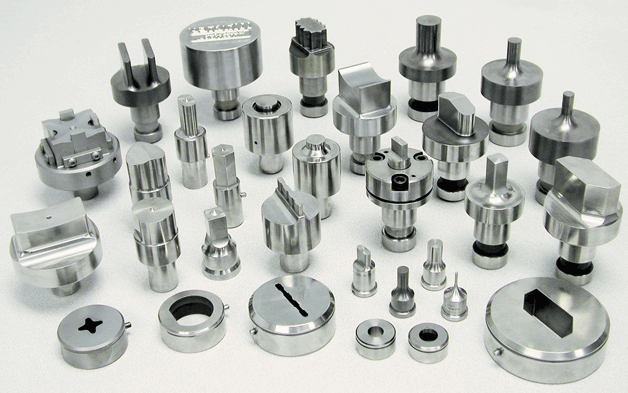|
Understanding the Cost of CNC Machines: A Comprehensive Guide
The industrial sector has seen a transformation because of CNC (Computer Numerical Control) devices, which enable precise and effective production procedures. Understanding the cost of CNC machines is essential for making wise selections, whether you’re a business owner, a hobbyist, or just interested in them. This blog post will examine the variables that affect cost of CNC machines, giving you important details about the cost to buy these cutting-edge machines. Factors Influencing the Cost of CNC MachinesMachine Type and Complexity:There are many different kinds of CNC machines, including milling machines, lathes, routers, and plasma cutters. Depending on elements like size, power, and complexity, the price of each type of machine might differ dramatically. Larger devices with more sophisticated features and capabilities are typically more expensive. Machine Size and Work Area:The cost of Cnc machines may vary depending on their physical dimensions and work area. Larger work areas on machines usually come at a higher price since they use more materials, have more durable construction, and have better functioning. Machine Construction and Quality:The cost of CNC machines is significantly influenced by the machine’s construction quality. The cost of CNC machines that are made with premium components, precise engineering, and high-quality materials is typically more. These devices provide increased sturdiness, accuracy, and stability, providing dependable performance over time. Axis Configuration:The adaptability and cost of CNC machines are influenced by the number of axes. Three-axis (X, Y, Z) machines are widely available and provide the most fundamental capabilities. Although they are more expensive, machines with four or five axes enable more intricate operations like multi-sided machining and the manufacturing of delicate parts. Control System and Software:The cost of CNC Machines are heavily influenced by the software and control systems that are employed. A larger price is demanded for sophisticated control systems with user-friendly user interfaces, robust programming capabilities, and file format compatibility. The entire cost may also rise if you purchase licensed software with extra features and technical support. Brand and Reputation:CNC machines with well-known, high-quality, and dependable names are frequently more expensive. Better warranties, customer service, and availability of spare parts are frequently included with these devices, assuring a more positive user experience. However, less well-known companies could provide affordable choices without sacrificing functionality. Additional Accessories and Tooling:CNC machines with well-known, high-quality, and dependable names are frequently more expensive. Better warranties, customer service, and availability of spare parts are frequently included with these devices, assuring a more positive user experience. However, less well-known companies could provide affordable choices without sacrificing functionality. What is the Average Salary of a CNC Machinist?The complexity of the work being performed, location, industry, and experience all affect the typical wage of a CNC (Computer Numerical Control) machinist. However, the average pay for a CNC machinist in the United States ranged from roughly $38,000 to $70,000 per year as of my knowledge cutoff in September 2021. Remember that this is simply an average and that depending on the conditions of a particular employee and the region, pay may vary. For the most recent information, it is always a good idea to investigate the current wage trends in your particular region. Factors affecting the Cost of CNC machiningMachine Cost: CNC machines themselves can range in price, from smaller and more affordable models to larger, high-end machines with advanced features. The cost of purchasing or leasing a CNC machine will have a significant impact on the overall expenses. Costs of Materials: The cost of materials used in CNC machining, such as composites, metals, and plastics, might vary. The price of some materials might be more than others or they would need to be machined using unique methods, which would raise the project’s overall cost. Part complexity: The complexity of the part that needs to be machined affects the time and effort needed for setup, programming, and machining. More complex designs or parts with narrow tolerances might need more time and knowledge, which would raise the price. Tooling and Fixturing: CNC machining requires the use of tooling, such as cutting tools and fixtures. Depending on the kind, caliber, and durability of the tools needed for the particular project, the cost of tooling may change. Additionally, costs may rise if specialist tooling or bespoke fixtures are required. Quantity and Batch Size: The cost per part can vary depending on the number of parts produced and the size of the production batch. Economies of scale often work in favor of larger quantities, lowering the cost per unit. However, because of setup and programming requirements, lower batch quantities or one-off projects may have greater costs. Finishing and Additional Processes: Depending on the requirements of the project, post-machining procedures including surface finishing, deburring, and coatings may be necessary. The overall cost may increase as a result of these additional procedures. It’s crucial to remember that, even though CNC machining can be more expensive than some other manufacturing techniques, it frequently has advantages in terms of accuracy, adaptability, and efficiency. The precise project needs, quality standards, and overall value that CNC machining adds to the production process are what determine whether it is cost-effective or not. Cost of CNC Machines ConclusionSeveral elements, including machine type, size, construction quality, axis arrangement, control system, brand, and supplementary accessories, can have a significant impact on the cost of CNC machines. Before making a buying selection, it is crucial to consider your unique needs, spending limit, and long-term objectives. It will be easier to make an informed investment if you do your homework on various providers, evaluate costs, and take into account the total cost of ownership (which includes maintenance, training, and software upgrades). Remember that even though the cost of CNC machines may be expensive at first, they provide unmatched precision, speed, and reproducibility, increasing production and lowering costs over time. In the end, carefully weighing the initial cost and potential future savings is necessary to select the best CNC machine for your purposes. |








